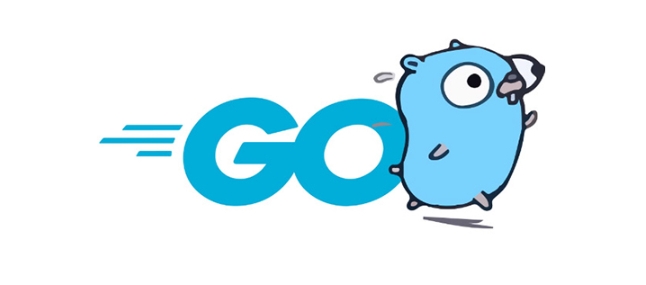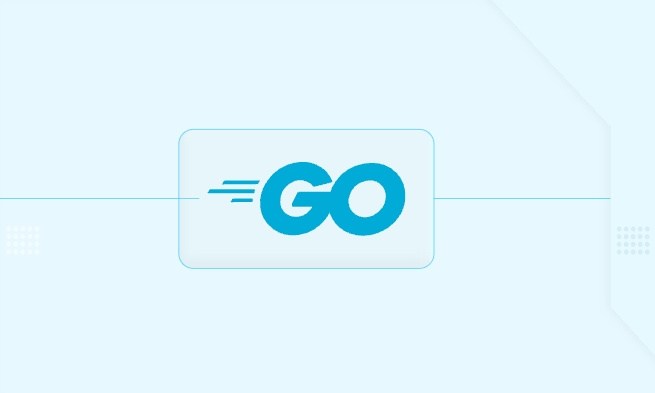Parsing and generating XML data can be implemented through structure mapping in Go language. 1. To parse XML, you need to define the corresponding structure and convert it with xml.Unmarshal(). The field name matches the label and the first letter is capitalized; 2. When generating XML, you can beautify the output with xml.Marshal() or xml.MarshalIndent(). The default root element is the structure name; 3. When dealing with complex structures, you can use pointer types to deal with missing fields, or use a general structure to process different child nodes; 4. Pay attention to common problems such as namespace, performance optimization, and case sensitivity.

Processing XML data is actually quite straightforward in Go language. As long as you master the basic structure and several key functions, it is still very convenient to use. encoding/xml package in the Go standard library has provided many practical functions, both parsing and generating XML.

Here are a few common scenarios from the perspective of actual use to help you get started quickly.

How to parse XML data
The most common way to parse XML is to first define a structure, and the field name corresponds to the tag name of the XML. Then use xml.Unmarshal() to convert the original data into a structure.
Let's give a simple example:

type Person struct {
Name string `xml:"name"`
Age int `xml:"age"`
}If you have an XML string:
<person><name>Alice</name><age>30</age></person>
This is how to parse:
var p Person err := xml.Unmarshal(data, &p)
A few points to note:
- Structure fields to be exported (first letter capitalization)
- The tag should be written accurately, such as
xml:"name"corresponding to<name>tag - If there is a nested structure in XML, the structure must also be nested accordingly
If the XML structure is complex or uncertain, you can consider using map[string]interface{} or manually traversing the token to parse.
How to generate XML data
Conversely, if you want to convert a structure into an XML string, you can use xml.Marshal() or xml.MarshalIndent() to beautify the output format.
For example:
p := Person{Name: "Bob", Age: 25}
data, _ := xml.Marshal(p)The default output is not indented in a new line. If you want it to be easier to read, you can use:
data, _ := xml.MarshalIndent(p, "", " ")
The result is probably like this:
<Person> <Name>Bob</Name> <Age>25</Age> </Person>
Notice:
- The output root element name is the name of the structure type by default.
- You can customize the tag name by setting
xml:"mytag"tag - If you want to add an XML declaration (for example,
<?xml version="1.0" encoding="UTF-8"?>), you need to manually splice it yourself
Tips for dealing with complex or irregular structures
Sometimes the XML structure is not fixed, such as some fields may not exist, or the tag sequence is confused. This is where some additional processing is needed.
For example, if a field may be missing, it can be declared as a pointer type in the structure:
type Item struct {
ID int `xml:"id"`
Desc *string `xml:"description"`
} If there is no <description> in XML, then this field will be nil and there will be no error.
Another situation is that there are multiple child nodes under the same tag, but their names are different, such as:
<items><itemA>One</itemA><itemB>Two</itemB></items>
In this case, you can define a general structure, or use struct{} to skip the specific structure and extract only the required parts.
Frequently Asked Questions and Notes
- Namespace : XML often has a namespace, such as
<name>. Go's standard library supports handling of namespaces, but requires manual processing of prefixes and URIs. - Performance issues : For very large XML files, parsing to memory at one time may not be efficient enough. At this time, it is recommended to use a streaming parser, such as
Decoder.Token()method to process one line by line. - Case sensitive : The structure fields of Go are case sensitive, so be sure to make sure that the tag and XML tags exactly match.
- Comments and special nodes : The standard library does not support retaining comments, CDATA, etc. If you have this requirement, you may need third-party libraries or expand them yourself.
Basically that's it. Although XML is not as popular as JSON, it cannot be avoided in some system docking. By mastering the structure mapping and analysis methods, you can easily deal with most scenarios.
The above is the detailed content of How to work with xml in golang. For more information, please follow other related articles on the PHP Chinese website!

Hot AI Tools

Undress AI Tool
Undress images for free

Undresser.AI Undress
AI-powered app for creating realistic nude photos

AI Clothes Remover
Online AI tool for removing clothes from photos.

Clothoff.io
AI clothes remover

Video Face Swap
Swap faces in any video effortlessly with our completely free AI face swap tool!

Hot Article

Hot Tools

Notepad++7.3.1
Easy-to-use and free code editor

SublimeText3 Chinese version
Chinese version, very easy to use

Zend Studio 13.0.1
Powerful PHP integrated development environment

Dreamweaver CS6
Visual web development tools

SublimeText3 Mac version
God-level code editing software (SublimeText3)

Hot Topics
 How can you handle JSON encoding and decoding effectively in Go?
Jun 11, 2025 am 12:02 AM
How can you handle JSON encoding and decoding effectively in Go?
Jun 11, 2025 am 12:02 AM
Effective handling of JSON in Go requires attention to structural labels, optional fields and dynamic analysis. Use the struct tag to customize the JSON key name, such as json:"name"; make sure the fields are exported for access by the json package. Use pointers or omitempty tags when processing optional fields to distinguish between unprovided values ??from explicit zeros. When parsing unknown JSON, map[string]interface{} can be used to extract data with type assertions. The default number will be parsed as float64. json.MarshalIndent can be used to beautify the output during debugging, but the production environment should avoid unnecessary formatting. Mastering these techniques can improve the robustness and ability of your code
 How can Go programs interact with C code using Cgo? What are the trade-offs?
Jun 10, 2025 am 12:14 AM
How can Go programs interact with C code using Cgo? What are the trade-offs?
Jun 10, 2025 am 12:14 AM
Go programs can indeed interact with C code through Cgo, which allows Go to call C functions directly. When using Cgo, just import the pseudo-package "C" and embed C code in the comments above the import line, such as including C function definitions and calling them. In addition, external C library can be linked by specifying link flags such as #cgoLDFLAGS. However, there are many issues to pay attention to when using Cgo: 1. Memory management needs to be processed manually and cannot rely on Go garbage collection; 2. Go types may not match C types, and types such as C.int should be used to ensure consistency; 3. Multiple goroutine calls to non-thread-safe C libraries may cause concurrency problems; 4. There is performance overhead for calling C code, and the number of calls across language boundaries should be reduced. Cgo's lack
 How can Go applications be cross-compiled for different operating systems and architectures?
Jun 11, 2025 am 12:12 AM
How can Go applications be cross-compiled for different operating systems and architectures?
Jun 11, 2025 am 12:12 AM
Yes,Goapplicationscanbecross-compiledfordifferentoperatingsystemsandarchitectures.Todothis,firstsettheGOOSandGOARCHenvironmentvariablestospecifythetargetOSandarchitecture,suchasGOOS=linuxGOARCH=amd64foraLinuxbinaryorGOOS=windowsGOARCH=arm64foraWindow
 How does Go handle pointers, and how do they differ from pointers in C/C ?
Jun 10, 2025 am 12:13 AM
How does Go handle pointers, and how do they differ from pointers in C/C ?
Jun 10, 2025 am 12:13 AM
Go simplifies the use of pointers and improves security. 1. It does not support pointer arithmetic to prevent memory errors; 2. Automatic garbage collection and management of memory without manual allocation or release; 3. The structure method can seamlessly use values ??or pointers, and the syntax is more concise; 4. Default safe pointers to reduce the risk of hanging pointers and memory leakage. These designs make Go easier to use and safer than C/C, but sacrifice some of the underlying control capabilities.
 What are the implications of Go's static linking by default?
Jun 19, 2025 am 01:08 AM
What are the implications of Go's static linking by default?
Jun 19, 2025 am 01:08 AM
Go compiles the program into a standalone binary by default, the main reason is static linking. 1. Simpler deployment: no additional installation of dependency libraries, can be run directly across Linux distributions; 2. Larger binary size: Including all dependencies causes file size to increase, but can be optimized through building flags or compression tools; 3. Higher predictability and security: avoid risks brought about by changes in external library versions and enhance stability; 4. Limited operation flexibility: cannot hot update of shared libraries, and recompile and deployment are required to fix dependency vulnerabilities. These features make Go suitable for CLI tools, microservices and other scenarios, but trade-offs are needed in environments where storage is restricted or relies on centralized management.
 How do I create a buffered channel in Go? (e.g., make(chan int, 10))
Jun 20, 2025 am 01:07 AM
How do I create a buffered channel in Go? (e.g., make(chan int, 10))
Jun 20, 2025 am 01:07 AM
To create a buffer channel in Go, just specify the capacity parameters in the make function. The buffer channel allows the sending operation to temporarily store data when there is no receiver, as long as the specified capacity is not exceeded. For example, ch:=make(chanint,10) creates a buffer channel that can store up to 10 integer values; unlike unbuffered channels, data will not be blocked immediately when sending, but the data will be temporarily stored in the buffer until it is taken away by the receiver; when using it, please note: 1. The capacity setting should be reasonable to avoid memory waste or frequent blocking; 2. The buffer needs to prevent memory problems from being accumulated indefinitely in the buffer; 3. The signal can be passed by the chanstruct{} type to save resources; common scenarios include controlling the number of concurrency, producer-consumer models and differentiation
 How can you use Go for system programming tasks?
Jun 19, 2025 am 01:10 AM
How can you use Go for system programming tasks?
Jun 19, 2025 am 01:10 AM
Go is ideal for system programming because it combines the performance of compiled languages ??such as C with the ease of use and security of modern languages. 1. In terms of file and directory operations, Go's os package supports creation, deletion, renaming and checking whether files and directories exist. Use os.ReadFile to read the entire file in one line of code, which is suitable for writing backup scripts or log processing tools; 2. In terms of process management, the exec.Command function of the os/exec package can execute external commands, capture output, set environment variables, redirect input and output flows, and control process life cycles, which are suitable for automation tools and deployment scripts; 3. In terms of network and concurrency, the net package supports TCP/UDP programming, DNS query and original sets.
 How does Go ensure memory safety without manual memory management like in C?
Jun 19, 2025 am 01:11 AM
How does Go ensure memory safety without manual memory management like in C?
Jun 19, 2025 am 01:11 AM
Goensuresmemorysafetywithoutmanualmanagementthroughautomaticgarbagecollection,nopointerarithmetic,safeconcurrency,andruntimechecks.First,Go’sgarbagecollectorautomaticallyreclaimsunusedmemory,preventingleaksanddanglingpointers.Second,itdisallowspointe






